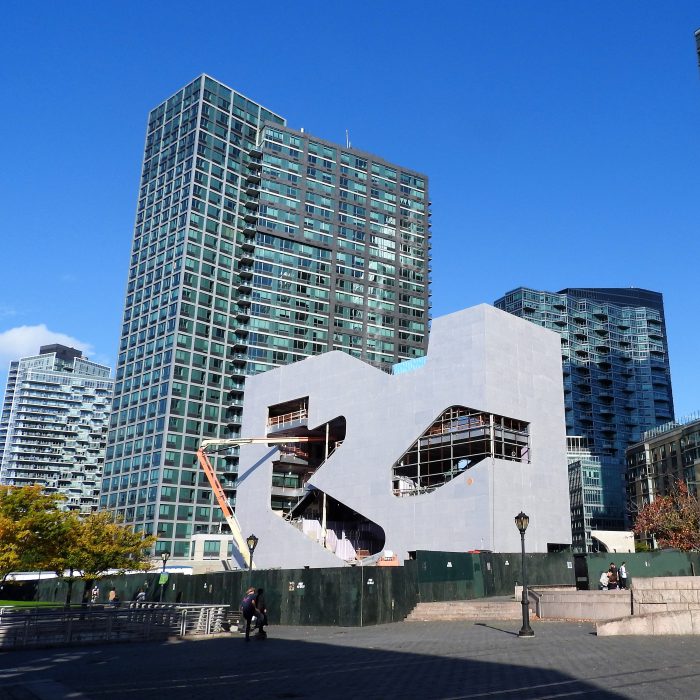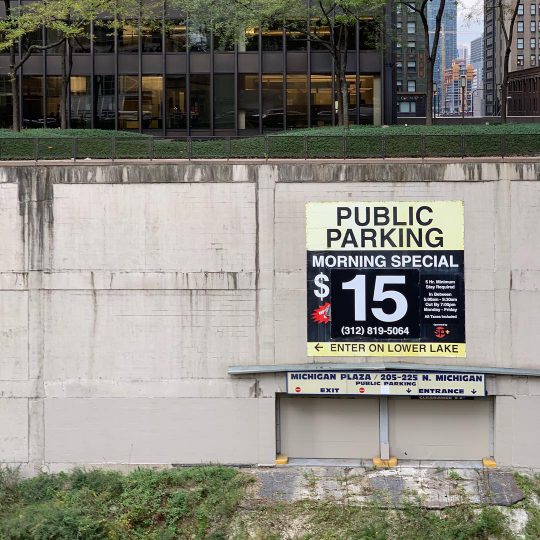Physical Address
304 North Cardinal St.
Dorchester Center, MA 02124
Physical Address
304 North Cardinal St.
Dorchester Center, MA 02124

1. Recently at Market Urbanism: Three Policies for Making Driverless Cars Work for Cities by Emily Hamilton To avoid repeating mistakes of the past, policymakers should create rules that neither subsidize AVs nor give them carte blanche over government-owned rights-of-way. Multiple writers have pointed out that city policymakers should actively be designing policy for the driverless future, but few have spelled out concrete plans for successful driverless policy in cities. Here are three policies that urban policymakers should begin experimenting with right away in anticipation of AVs. Rent Control Makes It Harder to Vote with Your Feet by Gary Galles devolving political power to lower level governments does not serve citizens’ rights when it comes to rent control, because rent control paralyzes owners’ ability to escape imposed burdens by voting with their feet. 2. Also by Market Urbanism writers: Nolan Gray at Citylab: Voters Said No in California, but Other States Have Rent Control Battles Looming Michael Lewyn at Planetizen: The Lincoln Park Story (On Daniel Hertz new book on the gentrification of the Chicago neighborhood) Michael Lewyn at Planetizen: New Urbanists and New Housing (about the friendly-but-troubled Market Urbanist/New Urbanist relationship) 3. At the Market Urbanism Facebook Group: Roger Valdez for Forbes: How To End The ‘Housing Crisis’ Roger Valdez for Forbes: HQ2 Frontlash Begins: The Answer Is More Housing, Some Built By Amazon Isabella Chu asks: Are people equally concerned about how to bring jobs to the once flourishing and housing rich older cities of the northeast? Anthony Ling asks: What are your thoughts on Richard Florida’s petition against Amazon HQ2’s “auction”? Via Joe Wolf: Seattle’s Most Influential People 2018: The YIMBYs Via Mirza Ahmed: Paid parking could be coming to Tacoma Dome Station Via Elizabeth Connor: Why we should pay more for parking Via Robert Wilson: At “Eleventh Hour,” City Rejects Tiny Home Village Plan to Relocate to TAXI Campus Via […]

One advantage of a federal system is enabling people ill-treated by one government body to “vote with their feet” toward less abusive jurisdictions. That escape valve is one rationale for reserving some political policy determination for state rather than national government, or to local rather than state government. However, devolving political power to lower level governments does not serve citizens’ rights when it comes to rent control, because rent control paralyzes owners’ ability to escape imposed burdens by voting with their feet. Virtually every rent control story focuses on local government policies. Less well known, however, is that a majority of states actually ban or restrict local governments’ power to impose rent control. And currently, in at least four states (California, Oregon, Washington, and Illinois), those restrictions are under attack. Municipalities want power they are currently denied so they can impose rent control, supposedly to give local citizens “what they want.” That raises the question of whether rent control policy should be vested at the state level or the local level. The Good, the Bad, and the Ugly of Local Governance In many circumstances, the option to vote with your feet favors local governance. It is generally less costly to leave a small local government jurisdiction whose benefits are not worth the cost, than it is to leave a similarly bad state government jurisdiction. By the same token, it is less costly to leave a state than it is to leave the country. The enhanced exit options provided at a more local level may better protect citizens’ rights. Citizens’ ability to cheaply leave smaller jurisdictions more tightly limits government’s ability to use them as cash cows rather than serve them better. This is true of sales and income taxes, for example. Dissatisfied residents can avoid those burdens by going somewhere […]
Some urbanists have become skeptical about the future of autonomous vehicles even as unstaffed, autonomous taxis are now serving customers in Phoenix and Japan. Others worry that AVs, if they are ever deployed widely, will make cities worse. Angie Schmitt posits that allowing AVs in cities without implementing deliberate pro-urban policies first will exacerbate the problems of cars in urban areas. However, cars themselves aren’t to blame for the problems they’ve caused in cities. Policymakers created rules that dedicated public space to cars and prioritized ease of driving over other important goals. Urbanists should be optimistic about the arrival of AVs because urbanist policy goals will be more politically tenable when humans are not behind the wheel. To avoid repeating mistakes of the past, policymakers should create rules that neither subsidize AVs nor give them carte blanche over government-owned rights-of-way. Multiple writers have pointed out that city policymakers should actively be designing policy for the driverless future, but few have spelled out concrete plans for successful driverless policy in cities. Here are three policies that urban policymakers should begin experimenting with right away in anticipation of AVs. Price Roadways Perhaps the biggest concern AVs present for urbanists is that they may increase demand for sprawl. AVs may drastically reduce highway commute times over a given distance through platooning, and if people find their trips in AVs to be time well-spent, when they can work, relax, or sleep, they may be willing to accept even more time-consuming commutes than they do today. As the burden of commuting decreases, they reason, people will travel farther to work. However, the looming increase in sprawl would be due in large part to subsidized roads, not AVs themselves. If riders would have to fully internalize the cost of using road space, they would think twice […]

1. Recently at Market Urbanism: Response to “Steelmanning the NIMBYs” by Michael Lewyn Scott Alexander, a West Coast blogger, has written a post that has received a lot of buzz, called “Steelmanning the NIMBYs”; apparently, “steelmanning” is the opposite of “straw manning”; that is, it involves making the best possible case for an argument you don’t really support. The land price argument and why it fails by Michael Lewyn One common argument against all forms of infill development runs something like this: “In dense, urban areas land prices are always high, so housing prices will never be affordable absent government subsidy or extremely low demand. 2. Also by Market Urbanism writers: Nolan Gray at Strong Towns: Wide Streets as a Tool of Oppression Nolan Gray at CityLab: The Improbable High-Rises of Pyongyang, North Korea Nolan Gray at Strong Towns: What if Lexington Got Serious About Student Drunk Driving? 3. At the Market Urbanism Facebook Group: Randy Shaw launched pre-orders for his upcoming book, Generation Priced Out: Who Gets to Live in the New Urban America Donald Shoup for Planning Magazine: Parking Price Therapy Nolan Gray shares the campaign site for a YIMBY candidate, Sonja Trauss for Supervisor 2018 Matt Miller asks: What’s the future of retail? Mark D Fulwiler says: Only about 4% of all commuters ( on average ) take mass transit on any given day Ben Barov asks: Are vacancy taxes market urbanism? Andrew Mayer asks: How much urban housing needs to be built to fix the deficit of supply? James Hanley likes open space on waterfronts, but keeps thinking of Jane Jacobs‘ criticisms of big parks. “What are your responses to this?” Via Adam Hengels: Steelmanning the NIMBYs Via Shawn Ruest: Elizabeth Warren’s New Bill Would Spend $500 Billion on Housing Via Carl Webb: So You Want to Change Zoning to Allow for More Housing Via Stephen Bone: How Singapore Solved Its Housing Problem Via Michael Burns: A Network […]
One common argument against all forms of infill development runs something like this: “In dense, urban areas land prices are always high, so housing prices will never be affordable absent government subsidy or extremely low demand. Furthermore, laws that allow new housing will make land prices even higher, thus making housing more unaffordable.” This argument seems to be based on the assumption that land prices are essentially a fixed cost: that is to say, that they can only go up, never go down. In fact, land costs are extremely volatile. For example, a recent Philadelphia Inquirer story showed that in Philadelphia, land costs per square foot of vacant land fell by 46 percent over the last year. Why? A developer quoted in the story suggests that as supply has started to keep up with demand, rents have declined, causing land prices to decline. In other words, when supply increases, rents go down AND so do land prices.
Scott Alexander, a West Coast blogger, has written a post that has received a lot of buzz, called “Steelmanning the NIMBYs”; apparently, “steelmanning” is the opposite of “straw manning”; that is, it involves making the best possible case for an argument you don’t really support. There have been so many comments to this post that I don’t feel the need to respond to every point (and many of the points are very San Francisco-specific). But here are a few points, each of which begin with a quote from Alexander: “Even in the best case scenario, increased housing supply will just make apartments slightly more affordable.” But the post states that if housing supply increases by the admittedly ambitious 2.5 percent a year, the monthly rent for a one bedroom San Francisco apartment will go down from $3500 to $2100- a forty percent decrease. Moreover, in looking at the effects of new supply it isn’t enough to compare the benefits of reform to the status quo, because it is quite possible that if we continue “business as usual” policies rents will keep rising. So instead of comparing $2100 to the current rent, maybe we should compare it to whatever the rent will be if San Francisco continues along its current path (which I am guessing is more than $3500). “If your theory predicts that turning a city into Manhattan will make rents plummet, then consider that turning Manhattan into Manhattan made rents much worse, and so maybe your theory is wrong.” This is another version of the theory that density causes rent to rise. I have responded to that argument here. (Brief summary: Manhattan has gotten LESS dense over time, so if density was bad for rent, Manhattan should be a bargain now!) “And I have heard YIMBYs counter that if people don’t want […]

1. Announcements: MUsings are back!! This week, we’ll get you caught up on the latest on our site and social media. Be sure to check out and share the new documentary video produced by The Institute for Humane Studies’ Josh Oldham, in collaboration with MU’s Nolan Gray and Sandy Ikeda. 2. Recently at Market Urbanism: California Legislation Threatens to Become Law and Build More Housing by Martha Ekdahl The bill, AB 2923, specifically targets the San Francisco Bay Area—making it easier than ever for the Bay Area Rapid Transit (BART) to build housing on the land it owns around its transit stations. Light and Air, Sound and Fury; or, Was the Equitable Life Building Panic Only About Shadows? by Nolan Gray In city after city, zoning was pitched as a way to preserve property values. And as the Federal Housing Administration marched across the country as a kind of dark Johnny Appleseed for Euclidean zoning, demanding use segregation, single-family zoning, and low densities in exchange for subsidized mortgages, the agency always defended its demands as an attempt to protect property values. Video: How Zoning Laws Are Holding Back America’s Cities by Nolan Gray It’s an understatement to say that zoning is a dry subject. But in a new video for the Institute for Humane Studies, Josh Oldham and Professor Sanford Ikeda (a regular contributor to this blog) manage to breath new life into this subject, accessibly explaining how zoning has transformed America’s cities. The Foreign Buyers Are Taking Over (Not!) by Michael Lewyn A headline in the Boston Globe screams: “Boston’s new luxury towers appear to house few local residents.” The headline is based on a report by the leftist Institute for Policy Studies, which claims that in twelve Boston condo buildings, “64 percent do not claim a residential exemption, […]

Earlier this year, researchers Paavo Monkkonen and Michael Manville at the University of California Los Angeles (UCLA) conducted a survey of 1,300 residents of Los Angeles County to understand the motives behind NIMBYism. As part of the study, they presented respondents with three common anti-development arguments, including the risk of traffic congestion, changes to neighborhood character, and the strain on public services that new developments may bring. But according to their findings, the single most powerful argument motivating opposition to new development was the idea that a developer would make a profit off of the project. At first blush, this finding might seem kind of obvious. People really don’t like developers. As Mark Hogan observed last year on Citylab, classic films from “It’s a Wonderful Life” to “The Goonies” depict developers as money-grubbing villains. But, when you think about it, it’s pretty weird that this is the case. In what other contexts do we actively dislike people who provide essential services, even if they happen to turn a profit? I don’t begrudge the owner of the corner grocery every time I buy a loaf of bread or a gallon of milk, and I hope you don’t either. In fact, most of us are probably happy that folks like doctors and dentists earn a lot for what they do. So why are developers, who provide shelter, any different? One possibility is that developers are often, for lack of a better term, assholes. This is surely the case with at least some developers. Our president is arguably America’s most famous developer, even if he isn’t exactly the master builder he played on television. And President Trump’s defining characteristic in his “Celebrity Apprentice” role—and evidently in real life—is that he is a bit of an asshole. But it isn’t just him. Most cities have […]

If you type “housing crisis” into Google search, “2008” is no longer the first result. The subprime mortgage crisis that toppled the global economy just a decade ago has been supplanted on Google trends by “housing crisis 2018.” This time, the crisis isn’t an overabundance of housing; it’s a chronic housing shortage. But economist Kevin Erdmann argues that the 2018 housing crisis is just the second act of the same tragedy. With local governments issuing fewer building permits and millennials beginning to buy their first homes, millions of Americans struggle to find affordable housing in 2018. The crisis is arguably the worst in California, where about one-third of all city-dwellers cannot afford local rents in every city in the state, San Diego to Sacramento. Economists and policy experts that study housing largely agree that the chronic unaffordability of American housing stems from persistent shortages in the quantity of housing supplied relative to the quantity demanded. Most housing scholars agree that “not in my back yard” (NIMBY) zoning laws are to blame. In many areas, NIMBY zoning laws have prevented developers from building multifamily housing in residential areas or forced developers to adhere to mandated minimum lot sizes. What resemblance, then, does our world of NIMBY-induced housing shortages have to do with the pre-2008 world with fast-and-loose credit policies [pdf] and overbuilt McMansions? That pre-2008 world, Erdmann argues, doesn’t really exist. [pdf] The traditional loose credit story is an easy one to tell––it appeals to populist sentiments (by demonizing rich bankers) and exudes the moral weight of an anti-capitalist parable about greed and gluttony. It makes for a great movie, “The Big Short.”And, to its credit, the traditional credit story even seems to explain much of the financial bedlam of 2008. Banks and investors placed too much confidence in risky mortgage-backed assets, […]
A headline in the Boston Globe screams: “Boston’s new luxury towers appear to house few local residents.” The headline is based on a report by the leftist Institute for Policy Studies, which claims that in twelve Boston condo buildings, “64 percent do not claim a residential exemption, a clear indication that the condo owners are not using their units as their primary residence.”* The report accordingly concludes that these buildings do not “address Boston’s acute affordable housing crisis.” This seems to be another version of the common “foreign buyers” argument: that new housing does not hold down rents, because it will all be bought up by rich foreigners who will let the units sit unoccupied forever. Although the report does not explicitly endorse restrictive zoning, it does urge the city to require new residential buildings to be carbon-neutral- a rule that might make residential construction more difficult. But this inference would be wrong. If you own a condominium, you have three choices: (1) to live in it; (2) to sit on it and lose money on your mortgage; or (3) to rent it out. Obviously, you make the most money through choice (3)- renting out the condo. So even a condo owner who does not choose option (1) has a strong incentive to adopt choice (3). Thus, it seems likely that at least some, if not all, of the condos will be rented out, thus increasing rather than decreasing regional housing supply, which in turn will have a positive effect on housing prices. *The residential exemption saves Boston homeowners up to $2500 per year on their tax bill. I would think that at least some owner-occupants are unaware of or forget to file for this exemption- but since I have no idea how common this is, I am reluctant […]